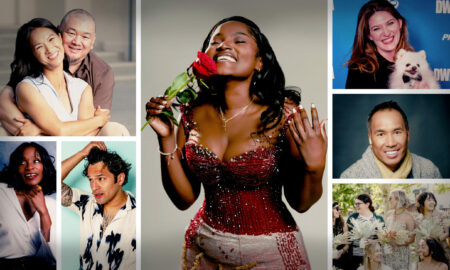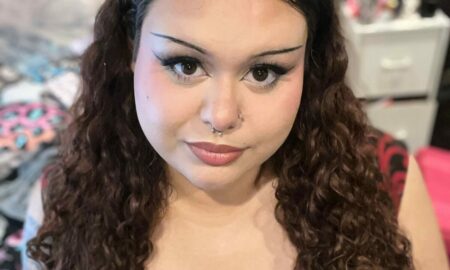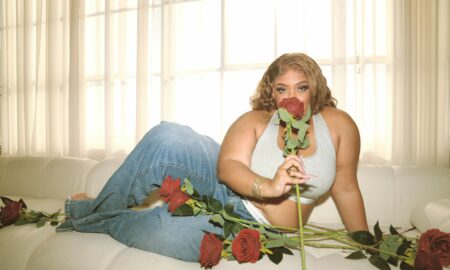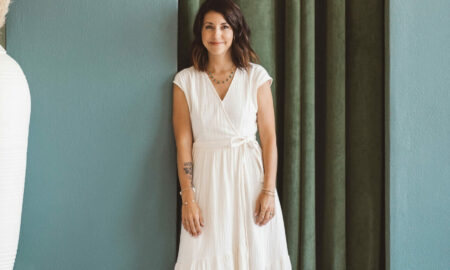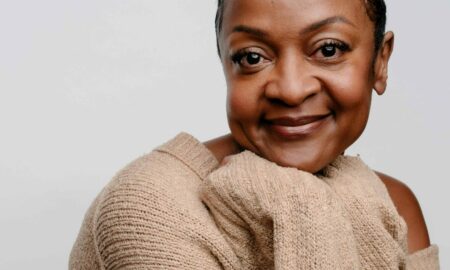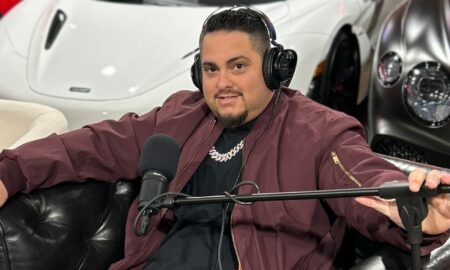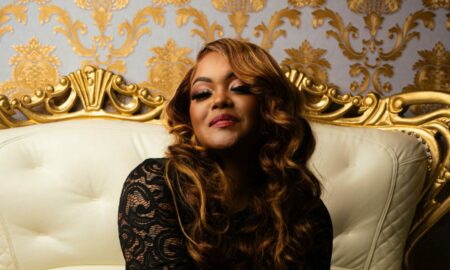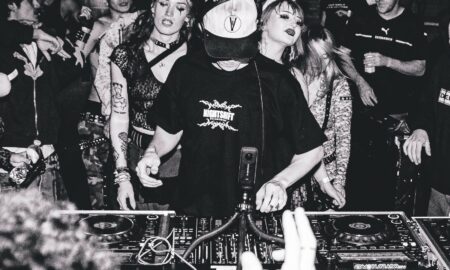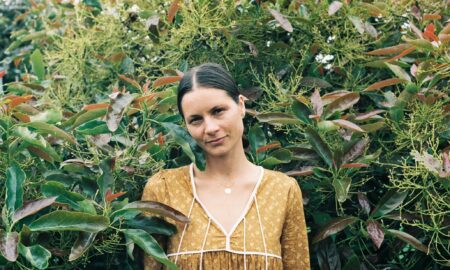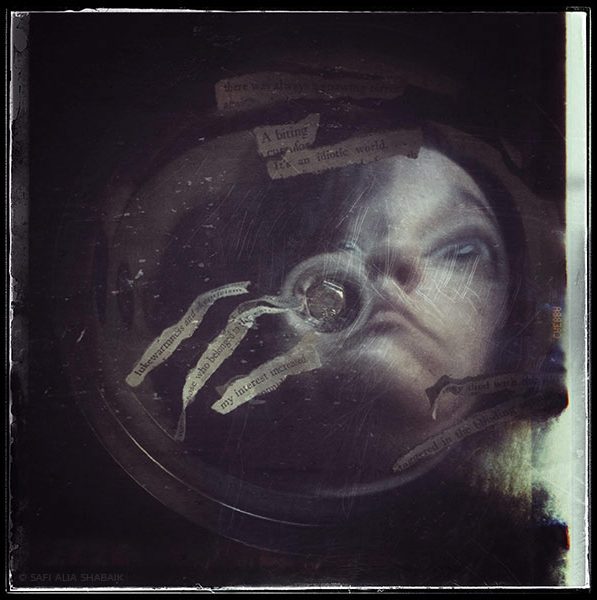

Today we’d like to introduce you to Safi Alia Shabaik.
Safi Alia, we’d love to hear your story and how you got to where you are today both personally and as an artist.
Sure! It’s quite an eclectic journey. I’m a California “Valley Girl,” born and raised in the San Fernando Valley. My father was from Egypt and my mom, from Texas. They met in Berkeley in the late ’60s but moved to Los Angeles to plant roots and start a family. From an early age, I was exposed to various forms of art-making … but photography, specifically – when my mother enrolled me in a pinhole camera class at the California Museum of Science and Industry when I was five or six. Photography has been my companion ever since. I’ve always had a love of anatomy and physiology so, upon attended UCLA, I started on a Pre-Med path. Early on, I switched to Anthropology but ended up graduating with a B.A. in Fine Art. I like to call it a well-rounded education. Post-college, Catherine Opie became my mentor and taught me the art of large scale color printing in her custom-built darkrooms. Shortly thereafter, I fell into big-budget Hollywood film production and worked on Starship Troopers and Godzilla. Life took another turn post-Godzilla, as I became a celebrity fashion stylist and worked with a bunch of musicians – Courtney Love and Hole (for a year), Sheryl Crow, Macy Gray, etc. I landed a spot for the next two years as the sole assistant to the fabulous designing duo, Kurt and Bart, for steady projects with Britney Spears – they were responsible for taking her out of her schoolgirl uniform and putting her into more adventurous clothing, including a lipstick red latex bodysuit, a breakaway pinstripe suit that, once removed, revealed her in a nude rhinestone bodysuit, a harem girl outfit (the latter two are part of the collection at The Rock and Roll Hall of Fame). During the Britney years, just before the millennium change, I moved to New York and began working with the legendary icon, Ms. Grace Jones. She was my solo project. For the next two years, I was her fashion stylist, her personal assistant, her travel companion and confidant, and also her documentarian, for both personal and public life. I was given free rein to photograph anytime we were together, which was often.
Life seemed to be going well and moving pretty fast, bouncing between Britney and Grace, traveling frequently for national and international gigs but, in a brief moment while back home in NY, the unthinkable happened and time seemed to stand still. The date was September 11, 2001, and, like many others, my whole trajectory and relationship to the world changed in an instant. I witnessed the twin towers fall. I experienced loss on such a grand level that day and for a long period after that actual day – the cleanup effort took years. I couldn’t reconcile the work I had been doing previously with the current seemingly apocalyptic landscape. My professional work felt hollow. I needed to give back to my community in a way that was more meaningful for me personally since so many people were experiencing such pain and personal loss. I felt that my sincere level of compassion and lifelong interest in anatomy could be put to good use. I enrolled in mortuary school and graduated at the top of my class, then practiced as an undertaker and embalmer. It’s a heavy job, as you can imagine, and takes a certain kind of person to survive around death on a daily basis long-term. There came a point when I needed a break. I ended up returning to my photographic roots and worked with a fashion/celebrity photographer for the next four years as his post-production manager, photo archivist, exhibition manager, etc. I wore many hats. Additionally, I got involved with the International Center of Photography (ICP), assisting in their darkroom labs and TA-ing workshops. Throughout all of these adventures, I was still creating art in my spare time.
After those four years with the fashion photographer, I moved back to Los Angeles to be near my parents, as my father was having some health issues. Upon returning, I jumped back into film production, working on Transformers II, Transformers III, and The Avengers. After The Avengers, I decided to focus more seriously on my own art, so I got involved with The Los Angeles Center of Photography, where I currently help teach workshops. I became a volunteer in the Fossil Lab at the La Brea Tar Pits. There, we sift through Ice Age matrix looking for various micro-fossils – plant material, insects, tiny bones, shells, etc. – and also restore larger bones. I became one of my father’s primary caregivers for the last two years of his life. I sell fine art prints of my work, get commissioned for specific personal photo shoots, get hired to photograph various events and nightlife around Los Angeles, and work on my own personal projects, as well as work as a freelance project manager.
We’d love to hear more about your art. What do you do and why and what do you hope others will take away from your work?
My art takes form through various mediums – usually through photography, collage, and experimental video; sometimes through sculpture, printmaking, or drawing. Throughout my life, the backbone of my work has been an exploration of identity and persona.
My photographic work expands on that with the inclusion of various subcultures and strives to present the humanity of all people. I’m drawn to individuals who live outside of the norm and use external creative expression – such as costume, culture, ritual, performance, alter-egos, etc. – to find acceptance and community. With subject matter ranging from the self to street to subculture to the extremely vulnerable collaboration with my father, my work investigates worlds that the viewer may never choose to enter or even know to exist … worlds that might push boundaries, thresholds or be regarded as culturally unacceptable parts of life. I explore this subject matter to bring to light that, underneath it all, we are all human. We must choose to open our eyes and expand our minds to understand and embrace difference. Once we do, walls that divide us will crumble; we will recognize the humanity in each of us and feel a common bond. When we feel connected, we have a larger capacity for understanding and love.
My collage work is an exploration of my subconscious as well as a study of the relationship between anatomical appropriation, objects, and culturally-infused meaning. I predominantly work in analog form, as opposed to digital manipulation. The many different parts of the collages are physically clipped from various sources and publications, mostly magazines geared toward women, so the imagery tends to implicitly explore and question gender roles and societal expectations – forms of identity. These collages often only exist at the moment in time when all of the loose-leaf parts come together. I document them with my camera in their new formation but don’t always make them permanent with adhesive … therefore once the images are memorialized in-camera, the loose-leaf parts are then disassembled and can now be reused for future collages. I call these “Transient Collages.” In an abstract way, I think there is metaphor in working this way: the loose-leaf parts of the collage themselves mimic the search for identity that I play with in the actual imagery, but these clipped out images might never truly find their meaning (since they are never glued down) … or perhaps another way to interpret it would be that they keep experiencing new meaning and metamorphosis since they get disassembled and reused through time – much like one’s journey of shifting roles and self-definition over the course of a lifetime.
My experimental videos have been visual metaphors drawn from experiences in my own life. They are created mostly with a Fisher-Price PixelVision Camera – on occasion with a Super8 film camera – and, once again, bring us back to topics of self, identity, and persona. From time to time, I create super crude stop-motion animations of certain transient collages – made in the traditional style of shooting multiple still images with my camera then animating them like a film strip or flip book.
I also create Dada-inspired poetry where I tear words and phrases from old books, place them in a cookie jar, then pull them out randomly and make meaning from the new relationships. I use them as poetry and, at times, in my transient collages. The self-portrait at the top of this article has one of these poems integrated in the image.
What do you think it takes to be successful as an artist?
Hmmm… Defining success as an artist – this is a tough question. I’m sure on any given day I’d have a new answer. I’d love to support myself full time from creating my art, to show my work consistently, to be collected internationally and to have my work be meaningful to others … but I think my truest answer to defining success as an artist is simply personal growth, allowing oneself to experiment, and to consistently create. I create to fulfill something within myself, so I think personal growth and experimentation are essential keys to that success and to being a happy human. As we age, I think we become a bit more protective in allowing ourselves to test out ideas that we’ve convinced ourselves will likely end in failure. But those are the ones that allow the creative spark to ignite and breed new invention. We have to be open to the basic idea of trying and we must also welcome failure – both of these lead to ideas and mind expansion, perhaps a new and more interesting perspective. This kind of brain flexibility is essential. We have to challenge notions and test out ideas. Passion and determination are essential qualities to succeed as an artist. There will be many roadblocks on that journey so one must make art from a certain driving force and innate passion (it’s a tough living, and consistent income isn’t guaranteed) … but if the passion is there, if you take risks, if you push yourself to try new things and think in new ways through experimentation, invention and constant creation, ideas and personal growth will follow, as will recognition and income.
Do you have any events or exhibitions coming up? Where would one go to see more of your work? How can people support you and your artwork?
My photographic work can be viewed on my website: https://flashbulbfloozy.com and on my instagram: https://www.instagram.com/flashbulbfloozy . I do not have gallery representation at this time but do show my work in various exhibitions around town. People who are interested in knowing about exhibitions and shows can sign up for my mailing list or email me directly through my website here: https://flashbulbfloozy.com/connect/ . I’ve also been interviewed and had work published by several outlets recently – The New York Times, Catalyst: Interviews, CameraCraft – and have a few more soon to be published in the coming months … people can visit those links here (additional publications and links are available on my website):
https://www.nytimes.com/2018/08/31/lens/tenderly-photographing-the-end-of-her-fathers-life.html
https://www.catalystinterviews.com/interviews/2018/11/1/safi-alia-shabaik
https://issuu.com/iconpublications/docs/aprilrevision
Currently, my transient collages and experimental videos are not available anywhere for viewing but I am working on getting those portfolios online in the near future.
People can support my work (and the work of other artists) by purchasing prints, offering shows and grants to underrepresented artists, attending exhibits, commissioning work, becoming a private donor, and by pointing others in their communities of friends to our websites. I’m considering setting up a Patreon account so if someone reading this would like to become a private donor, please contact me through my website and I can send you the link once it’s live.
Could you ever imagine a world without art??!? Support your local artists by investing in their work!!! A huge thank you to those who already do!
Contact Info:
- Website: https://flashbulbfloozy.com/
- Instagram: https://www.instagram.com/flashbulbfloozy/
- Other: https://flashbulbfloozy.tumblr.com








Image Credit:
All Images © Safi Alia Shabaik
Getting in touch: VoyageLA is built on recommendations from the community; it’s how we uncover hidden gems, so if you know someone who deserves recognition please let us know here.

